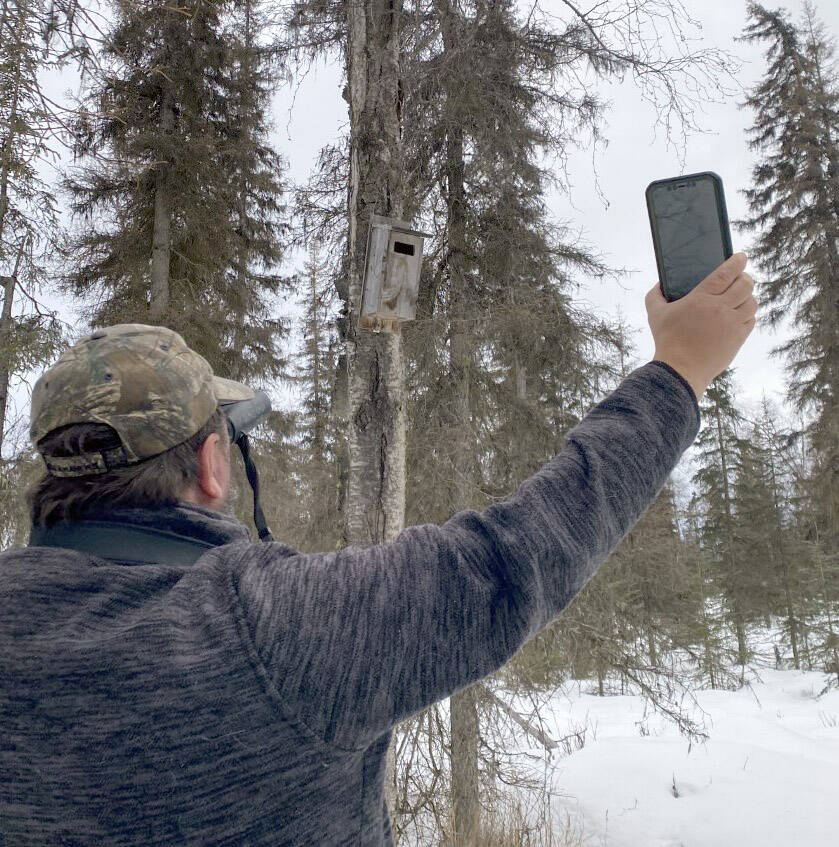Imagine hearing unrecognized voices in your backyard. Immediately, your heart rate shoots up, and you begin planning on whether to call 911 or go out and confront the potential trespasser.
If you have kids, you frantically locate them and then turn to find out, “Who is on my property?” By the end of this article, I hope you chuckle when you realize how ridiculous this attention-grabbing scenario is. But is this analogy really that far from the truth?
In recent years, with the proliferation of electronic devices, bird watchers have found that playing the song or call of a target bird species on their phone can effectively draw birds into the open. In some cases, with the more secretive species, this may be the only way to catch a glimpse of the bird.
Call devices have certainly had a positive effect on enticing a few more folks into the world of birding because it can substantially reduce the time it would take to gain an organic viewing opportunity and reduce frustration to those new to the birding experience.
Some potential negatives go along with this new technology and understanding them will help us make an informed decision about when and where to use this trickery.
Many bird species establish territories that serve to guard a nesting area or a favorite food source. This behavior is what makes the use of playbacks so effective. Hearing a “stranger” in their space prompts an investigation and determination of appropriate response.
While there is little scientific research on the impacts of imitating a competitor in another’s territory, there are a few studies that reveal potential consequences. Unfortunately, the results indicate the practice may not be the best for the birds.
One researcher found that in the black-capped chickadee world, there is a hierarchy, and a dominant singing male will often be the one to pass on his genes to many adjacent nests. However, when challenged with submissive playback calls, he still reigned supreme.
However, when he heard a more aggressive call over and over again, he was unable to drive away the aggressor (an iPhone), and he lost his status among the females that eavesdropped on the apparent battle.
How did researchers learn this?
Subsequent parental DNA tests of the surrounding nest revealed this male was not well represented and did not pass on his genes at the same rate as the unchallenged dominant males. So, in this case, it was not just the wasted energy of chasing ghosts that cost him, but the apparent loss of a battle he never waged.
On the Kenai National Wildlife Refuge, we have not documented any substantial impacts attributed to the use of playback calls. I know they are sometimes used to locate individuals of hard-to-see species like owls.
For more common species like the great horned owl, territorial birds often hear other owls encroaching on the perimeter of their territory. As a result, they may have become accustomed to and plan for these relatively common intrusions.
For rarer owls, like the western screech owl, which has slowly been expanding onto the Kenai Peninsula, the use of playbacks may be more detrimental to their nesting success. In a few areas where owls use nest boxes, there is sporadic anecdotal evidence to suggest playback devices may have negative impacts.
As these nest box sites became more widely known, bird watchers have been innocently visiting these areas more frequently and using playback calls to solicit a response. It may just be a coincidence, but the boxes that hosted owls historically are now going unused even though there are still owls calling in the area.
Whether the effect is real or perceived does not really matter. The practice of using playbacks is a powerful tool, just as technology has provided us with relatively affordable drones, cameras on every phone and remote game cameras. But, like many things, there are right and wrong times and places to use them.
There are some very nice guidelines for bird watchers that identify the when, where and how one should utilize a playback to minimally impact birds (https://www.sibleyguides.com/2011/04/the-proper-use-of-playback-in-birding/).
There are also some cues that you can take from birds. For instance, if birds come in agitated and looking for a fight, it is a good signal that you have likely gone too far with your mimicry.
You can also consider seasonality. If it is the height of the nesting period for your target species, you should probably keep the playback in your pocket and just enjoy listening for the bird to make a call on its own accord.
The last consideration is for people. The dedicated birder, driving through a neighborhood playing owl calls like the blaring of an ice cream truck after midnight, often elicits two responses.
The nonbirder will have law enforcement and the local neighborhood watch group on speed dial. The birders in the neighborhood will be equally disappointed when they find out the new species on their yard list is just you, parked in the driveway with your iPhone hanging out the window.
Playbacks are a wonderful tool and, when used in the right place at the right time, can greatly reward you with a connection to species you may have never realized were there. They just require a little more planning and understanding to ensure we don’t do harm to the birds we are trying to appreciate.
Todd Eskelin is a Wildlife Biologist at Kenai National Wildlife Refuge. Follow us on Facebook for additional information from the Refuge http://www.facebook.com/kenainationalwildliferefuge.

